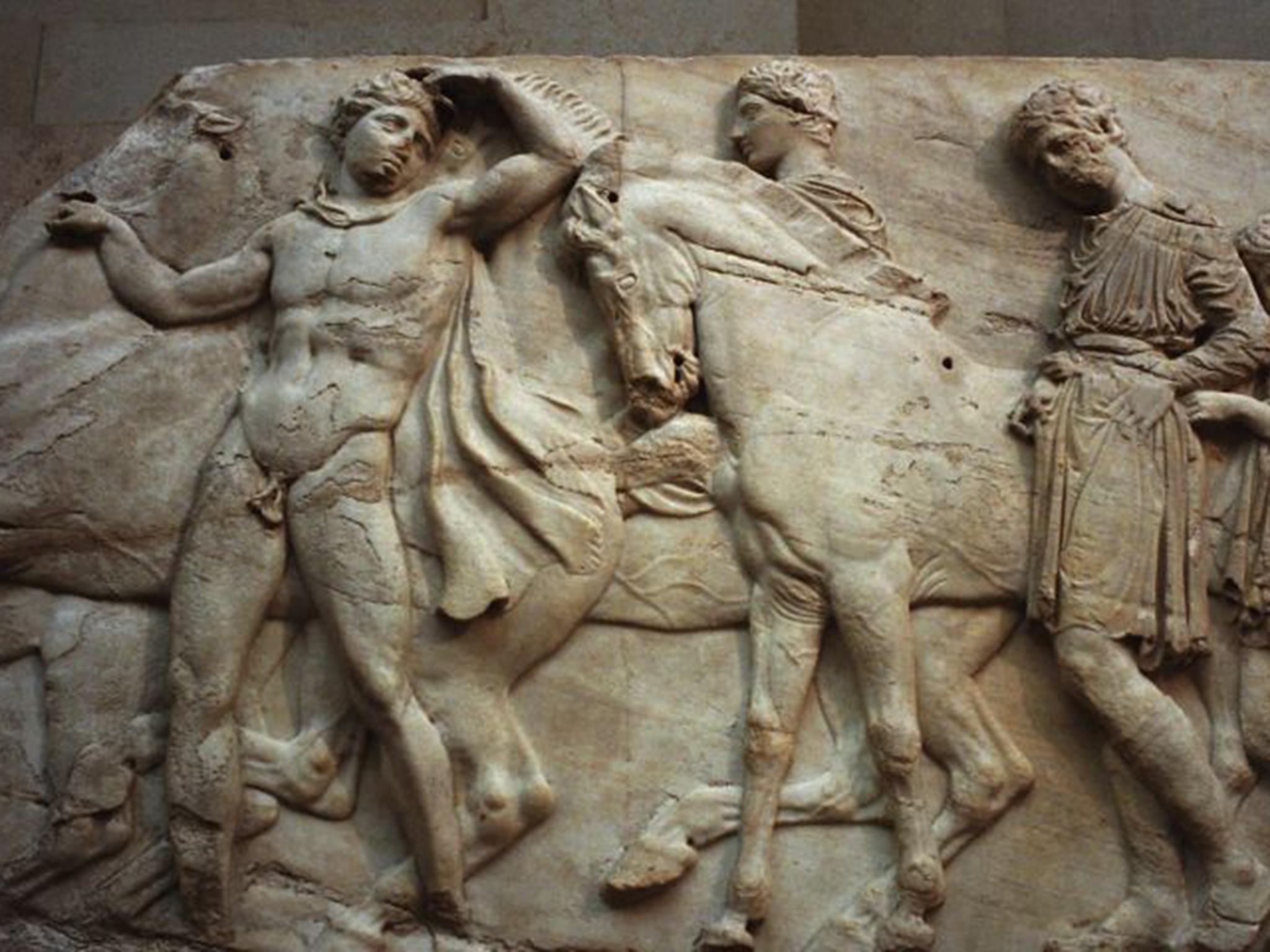The British Museum's new Rodin exhibition proves the Elgin Marbles should remain in the UK
The Marbles are icons of global culture and their place in the canon of Western art is as much due to nineteenth and twentieth-century responses to them, made possible by Britain's curatorship


Rodin is not an artist you turn to for beauty. He exaggerates and particularises, his sculptures teeter on the grotesque, even when they’re supposed to portray beauty.
His Monument to Balzac isn’t Balzac, but a caricature, a pronounced feature looming beyond the reality of the man. It’s the same with more “abstract” sculptures: The Walking Man, The Kiss – even if what we’re witnessing is the moment when passion becomes all-consuming, they’re meant to signify all such moments, their nudity a sort of cloak of anonymity. They are, after all, like The Thinker, a blown-up after-thought from Rodin’s unrealised magnum opus, The Gates of Hell, the entrance for a museum of decorative arts in Paris that was never built.
A year after the centenary of his death, the British Museum has brought together plaster casts, models, bronzes and a few marbles in juxtaposition with some of the ancient Greek artworks that apparently inspired them.
The frieze relief sculptures and free-standing figures from the pediment of the Parthenon in Athens, shipped to England 200 years ago by the Earl of Elgin, were a revelation of marble’s potential and the often overwhelming reality of actual Greek sculpture for 19th century artists – Rodin not least – who were used to extolling the virtues of Roman copies of Greek originals.
Rodin first saw them in the flesh, so to speak, in 1881. Here was the thing itself, battered, bruised and broken it’s true, but shining with naturalistic detail and tour-de-force beauty nonetheless. The fact Rodin comes off the worse from the encounter isn’t the museum’s fault but has as much to do with the short-comings of the ‘Michelangelo of France’ himself.
For instance, Rodin’s men are all muscle and bone, toes curling, big burley builders’ hands pressing the flesh or dragging their half-formed limbs through some sort of primeval bronze ooze. The thuggish Thinker, a thick-necked Neanderthal wracking his tiny brain and gnawing on his knuckles in the effort, must be the ugliest great statue of all time.
It all started so well, though; Rodin’s beautiful The Age of Bronze, his first assay into the critical world of the Paris Salon in 1877, was so sensual, so perfect in detail that the academicians doubted if it wasn’t made from a life cast. Here is the spirit and feel of the ancient Greek model he was considering, so he says, all his life.
However, while it would be perfectly possible to write a lengthy essay about the merits of Rodin (many have after all), that is enough about him for now. He has his champions and I’m not one of them.
What is more interesting is the way the exhibition can be interpreted as a (doubtless intentional) attempt by the British Museum to plead their rightful ownership of the so-called ‘Elgin Marbles’. It was because they were on display in the British Museum that artists like Rodin, who never visited Greece (few did) were able to see and appreciate them.
The first chapter of the exhibition catalogue charts the sorry tale of the Parthenon and its sculptures post-antiquity, victims of neglect and disaster both natural and man-made, and how the umming and ahhing of parliamentarians nearly forced Elgin to sell his collection to France.
The inference is, to put it plainly, that without the custodianship of the museum’s curators and trustees over the last two centuries, this exhibition and others like it would not have been possible. Arguably, it still wouldn’t be possible if the sculptures had been returned to Greece in recent years.
The curators and trustees of the British Museum have a point. Physically the sculptures can never be returned to the Parthenon, only to a museum nearby, so why not keep them where they can be seen by considerably more visitors in any case.

Moreover, they have become more than a piece of modern Greece’s heritage. They are now icons of global culture, international symbols of what human beings can achieve in all their god-like serenity. Their place in the canon of Western art is as much due to 19th and 20th-century responses to them, and Rodin here is only one example, as it is to their status as precious fragments of olden times.
And it’s the British Museum, and the millions of visitors who’ve filed through its doors in the years since they were first put on display, who made them so.
Rodin loved these sculptures. “No artist will ever surpass Pheidias,” he said. “The greatest of the sculptors, who appeared at the time when the entire human dream could be contained in the pediment of a temple, will never be equalled.”
He copied and copied and distilled and recast them, for their sake as much as for his own work. He may not have lived up to their example, but he championed their vision of what is possible. Long may the love affair continue.
Join our commenting forum
Join thought-provoking conversations, follow other Independent readers and see their replies
Comments
Bookmark popover
Removed from bookmarks